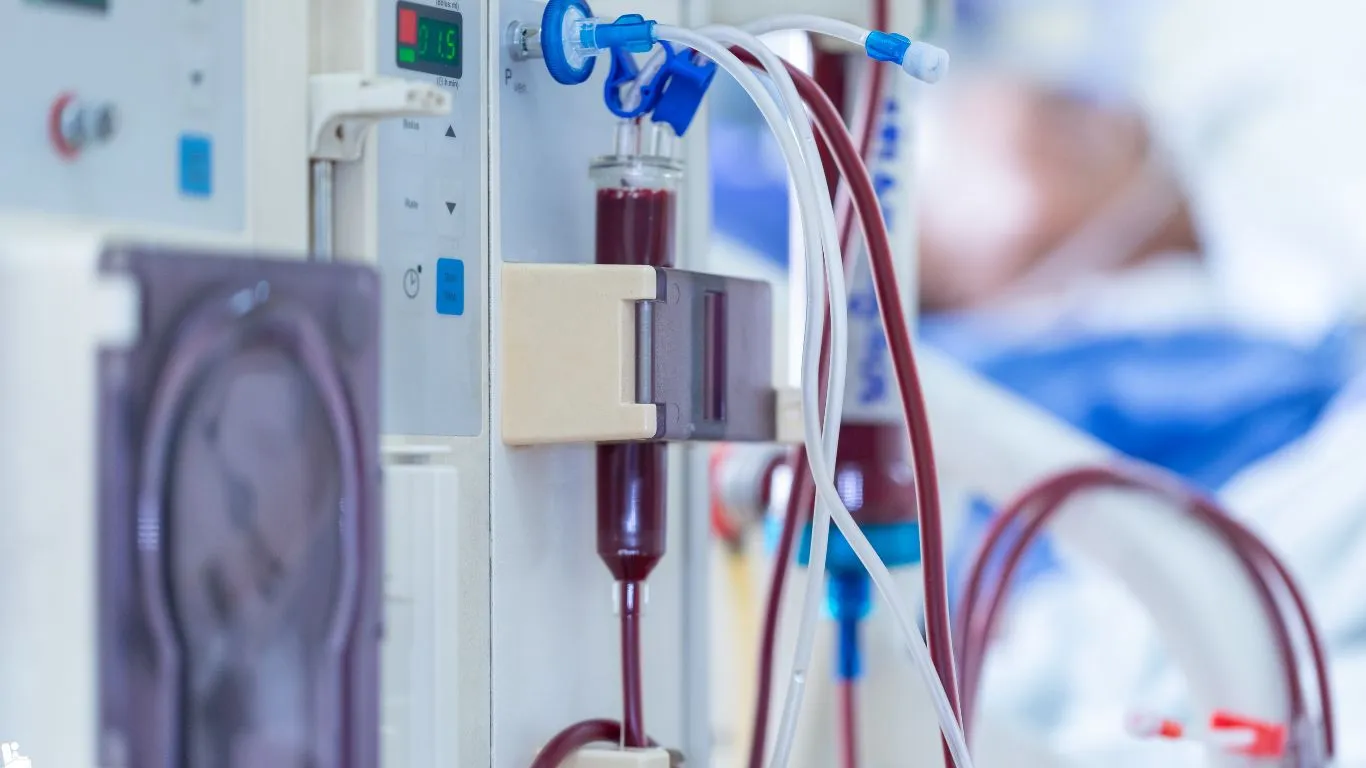
21 أغسطس What is an Arteriovenous Fistula (AV Fistula)?
People in advanced stages of kidney disease require periodic kidney dialysis using a dialysis machine. To accomplish this, it’s necessary to establish a connection between the person’s bloodstream and the dialysis machine using appropriate conduits. What is an AV fistula, what are its benefits, and what are its risks? Dr. Amir Malkawi, a vascular surgery consultant, will explain these in the following article.
Definition of Arteriovenous Fistula
An arteriovenous fistula (AV fistula) is a common method used to create a stable connection between the body’s circulatory system and a kidney dialysis machine. This method is often preferred during dialysis compared to other methods such as arteriovenous grafts.
The principle of an AV fistula involves surgically connecting an artery and a vein in the arm. An artery is attached to a tube that carries blood to the dialysis machine, and a vein is attached to another tube that returns blood from the dialysis machine back to the circulatory system.
Read more: Installation of a Kidney Dialysis Machine in the Arm
Advantages of Arteriovenous Fistula
The AV fistula method offers several advantages compared to other types of connections to a dialysis machine:
- No synthetic materials are implanted inside the body.
- It requires only local anesthesia and can be performed in a doctor’s office without the need for hospitalization.
- It remains effective for a long duration compared to other methods.
- Improves blood flow rate to the dialysis machine, thereby reducing dialysis session duration.
- Lower risk of blood clot formation compared to other methods.
- Lower risk of infection at the site.
- Facilitates quick return to normal activities after dialysis sessions.
Disadvantages of Arteriovenous Fistula
Generally, an arteriovenous fistula (AV fistula) or arteriovenous shunt is safe for kidney dialysis patients. However, like any other medical procedures, it may be accompanied by some side effects and risks in certain cases, including the following:
- In some cases, clotting may occur in the AV fistula. In such instances, the doctor may be able to remove the clot and reuse the fistula, or a new fistula may need to be created.
- Bacterial infection may develop at the site of the AV fistula wound. In such cases, appropriate antibiotics prescribed by the doctor according to the condition are necessary.
- Swelling in the arm where the fistula is installed. This swelling typically resolves within a short period by elevating the arm above heart level and moving the fingers.
- Numbness and tingling in the arm, which often subsides over a short period.
- Circulatory disturbance affecting blood flow to the hand, which may lead to symptoms such as coldness, weakness, tingling, and numbness.
- The installation of an AV fistula under the supervision of a competent and experienced medical team plays a significant role in minimizing side effects and disadvantages as much as possible and reducing the likelihood of their occurrence.
Caring for Kidney Dialysis Fistula
There are several specific instructions regarding the care of a kidney dialysis fistula, including:
- Always maintain cleanliness of the area.
- Ensure regular health assessments of the area to check for infections before dialysis.
- Avoid manipulating the fistula site.
- Refrain from using the fistula for purposes other than dialysis, such as administering medications.
- Monitor for any signs of infection, such as redness or pus.
- Avoid positioning the arm with the fistula under the body or head while sleeping.
- Avoid wearing tight clothing that compresses the arm with the fistula.
- Refrain from wearing accessories on the arm with the fistula.
- Avoid lifting heavy weights.
Frequently Asked Questions
Are there other options besides a kidney dialysis fistula?
Yes, there are several other options for connecting a kidney dialysis machine to the bloodstream, but a fistula is typically the preferred choice. If there are limitations to using a fistula, such as weak blood vessels, appropriate alternatives like a graft are chosen.
Does a kidney dialysis fistula cause scarring on the arm?
Yes, a kidney dialysis fistula often leaves a scar on the arm, but it is usually a small scar not exceeding 4 centimeters, and it may fade over time.
References:
[1] – https://www.kidney.org/atoz/content/hemoaccess
[3]-https://www.azuravascularcare.com/medical-services/dialysis-access-management/av-fistula-creation/
[5] – https://surgery.ucsf.edu/conditions–procedures/vascular-access-for-hemodialysis.aspx
[6] – https://www.yalemedicine.org/conditions/preparing-dialysis-av-fistula
